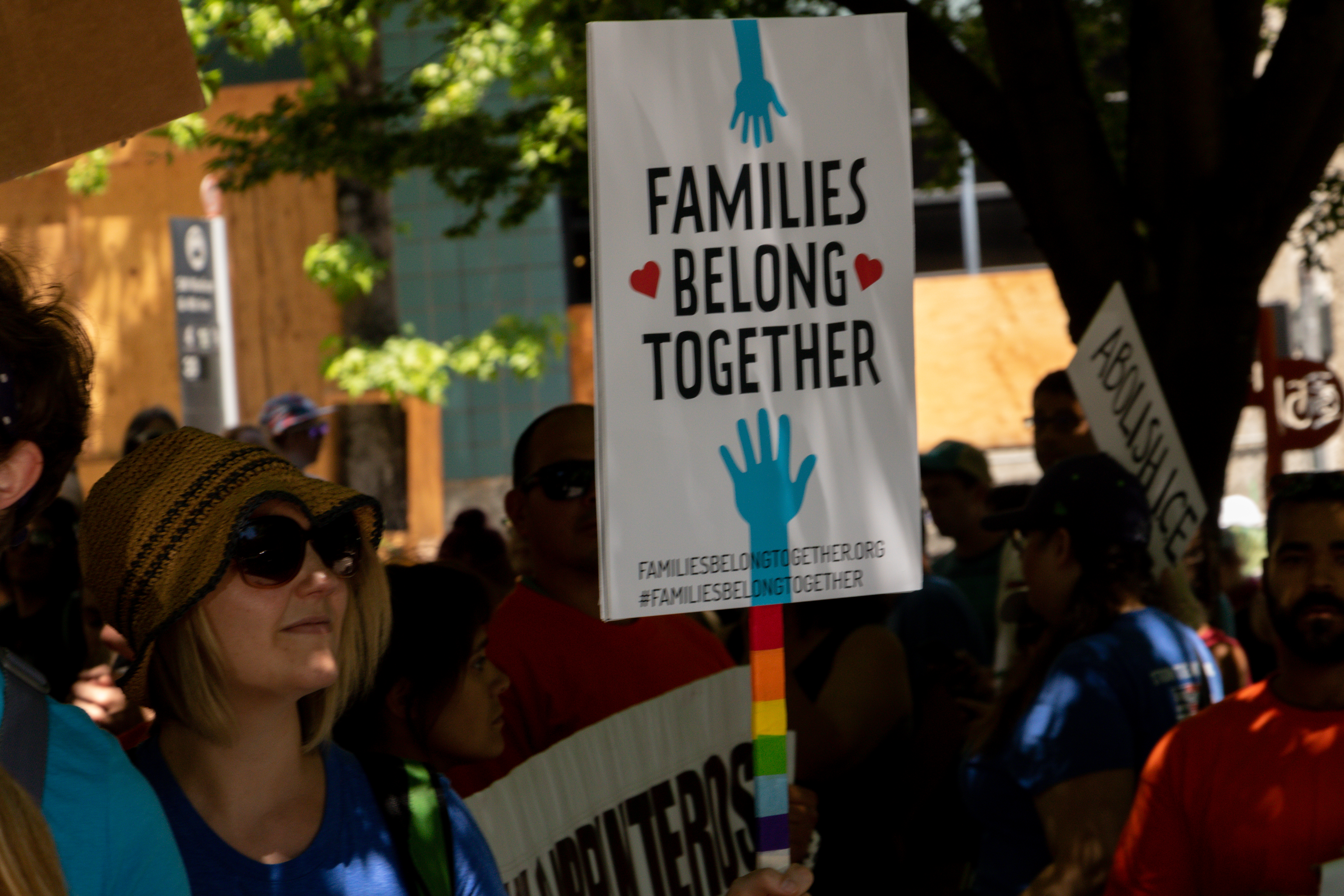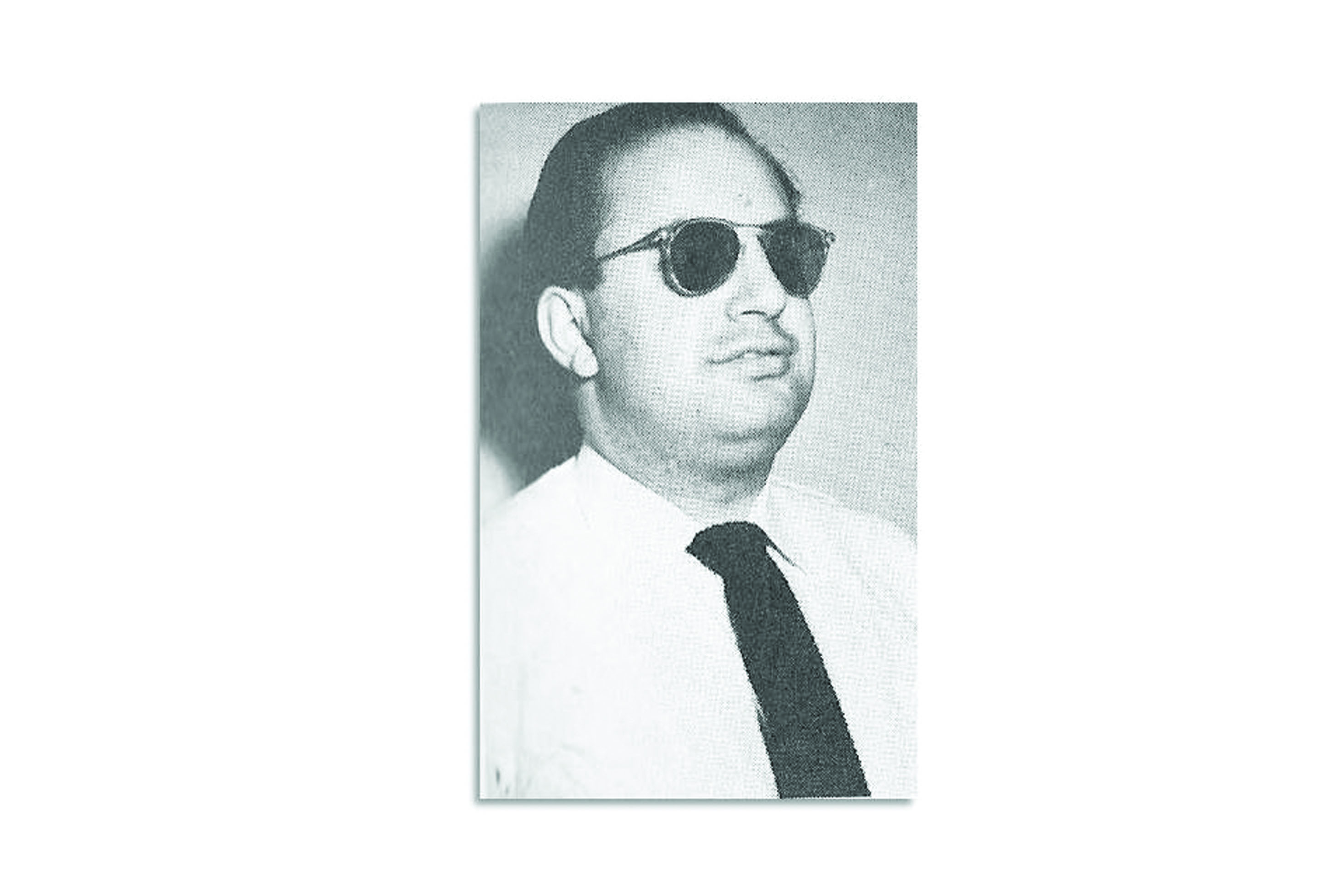Since June 17, protestors have blockaded the entrances to Portland’s Immigration and Customs Enforcement facility on SW Macadam Ave. What began as a small group of about 20 protestors swelled to several hundred activists and community leaders. On Wednesday, June 20, an ICE spokesperson announced the facility would be closed indefinitely, citing security concerns.
On the evening of Sunday, June 17, demonstrator Tony Hadden—one of the original participants—placed his body in front of the car of an ICE employee attempting to leave the building. When asked if he was afraid, Hadden said, “No. Actually, I was thrilled. I was having a great fucking time, because you know what? Fuck this establishment. If they want to fucking hit me, they can fucking hit me.”
Later that evening, people were around the facility, resting in tents or holding signs with slogans such as “Everyone is Welcome Here” and the ever-popular “Chinga la Migra,” alongside its English counterpart “Fuck Border Patrol.”
The group organizing the protest, Occupy ICE PDX, issued a statement saying it would remain at the facility until “concrete and meaningful action is taken to reunite families.” Although an executive order announced by the White House on June 20 claims it will halt most separations of migrant families, it provides no guidance or resources for reuniting those that have already been split.
Organizer Jacob Bureros said he would not be leaving until the ICE facility was removed from the city entirely. “We want this facility out of Portland because this is a sanctuary city,” he said. “If our politicians aren’t going to enforce the sanctuary city status, then the people of Portland will enforce the sanctuary city status.”
Bureros criticized Oregon’s elected officials for speaking out against ICE while not putting their bodies on the protest line themselves. “If politicians believe in this, they need to stop being scared of children being locked in cages, separated from their families,” he said. “If that isn’t enough to make you step out of the box and do something radical and fight back, if that’s not enough to convince you that something beyond your legislating needs to be done, then I don’t know what is going to get them to take action.”
He nonetheless had kind words for Sen. Jeff Merkley, D-Ore., whose recent video showing him being denied access to a Texas detention facility for undocumented children sparked a national conversation about migrant family separation. “I think Senator Merkley genuinely cared about what was happening, and that’s why he went,” Bureros said. “I don’t think it has anything to do with him being a politician.”
The occupation appeared to be sustaining itself even without help from officials. Gesturing to the numerous individuals and tents around him, Bureros said, “This encampment, this blockade all started from people just figuring it out together. It wasn’t some brilliant leadership. It wasn’t an activist brainstorming. It was people in the community who were fed up.” Around the camp, tents were set up offering free water, food and medical supplies.
On June 24, many of those occupiers participated in a rally at Portland City Hall. Originally intended to take place at the ICE facility, the event moved to City Hall amid concerns about the high numbers of expected participants.
During the rally, several local politicians gave speeches about the hardships that come with being an immigrant in the U.S. The politicians who spoke at the event included Reps. Diego Hernandez, Sheri Malstrom and Rob Nosse and Sen. Michael Dembrow.
Nosse, the representative for Oregon’s 42nd District—an area that covers Southeast and Northeast Portland—spoke out against the Trump administration’s immigration policies saying, “What Trump and ICE [are] doing to families coming here for their children to have a better life is unacceptable,” and he criticized such practices as “not reflective of the true spirit of this country.”
Following the rally, the atmosphere surrounding the occupation of the ICE facility began to turn confrontational as both the federal government and the landlord for the building itself began to take action.
Stuart Lindquist—the owner of the building from which the Portland branch of ICE operates—had admitted to hitting an occupier with his vehicle while trying to leave his property, and even told a Willamette Week reporter he would gladly fight the occupiers “one at a time” if given the chance.
Lindquist had repeatedly requested that Portland Mayor Ted Wheeler instruct the Portland Police Bureau to remove the occupiers. However, Wheeler had already expressed his desire for the PPB to not interfere with the occupation in any way, telling the PPB to leave the issue to federal authorities.
In the early afternoon of Monday, June 25, the Department of Homeland Security served the camp with a notice stating the protestors were breaking the law by blocking entrances to the federal facility and those who continued to block the entrances would be subject to arrest and subsequent prosecution.
City Commissioner Chloe Eudaly, who has called for the abolishment of ICE and spent time at the occupation of the Portland ICE Facility, defended the occupiers, saying, “[the protestors’] intent is to shut down [the] facility, so moving out of the driveway and the doors kind of defeats the purpose of the protest.”
By noon on Tuesday, June 26, flyers similar to those distributed the day before were offered to occupiers, with many of the protestors tearing them apart or simply refusing to take them. Currently, the protest camp has grown to over 90 tents and anywhere from 100–200 occupiers at any given time.
At 5:30 a.m. on Thursday June 28, DHS officers formed a barricade around the ICE office and cleared the front entrances to the building of protesters, tents and anything else associated with the camp, leaving most of the campers belongings on the curb. Several individuals were arrested during the so-called raid, and VICE reported seven were charged with misdemeanors for failing to comply with the orders of federal agents.
As of this article’s writing and despite recently losing the ability to block the entrances of the ICE facility, the occupation continues to deeply embed itself in preparation for an indefinite residence at 4310 SW Macadam.
The VICE report described efforts among the occupiers to build ramps for the purposes of allowing wheelchair access, as well as covering the ever-growing assortment of tents with a series of tarps in order to avoid the gaze of federal employees working in the upper floors of the ICE facility.






